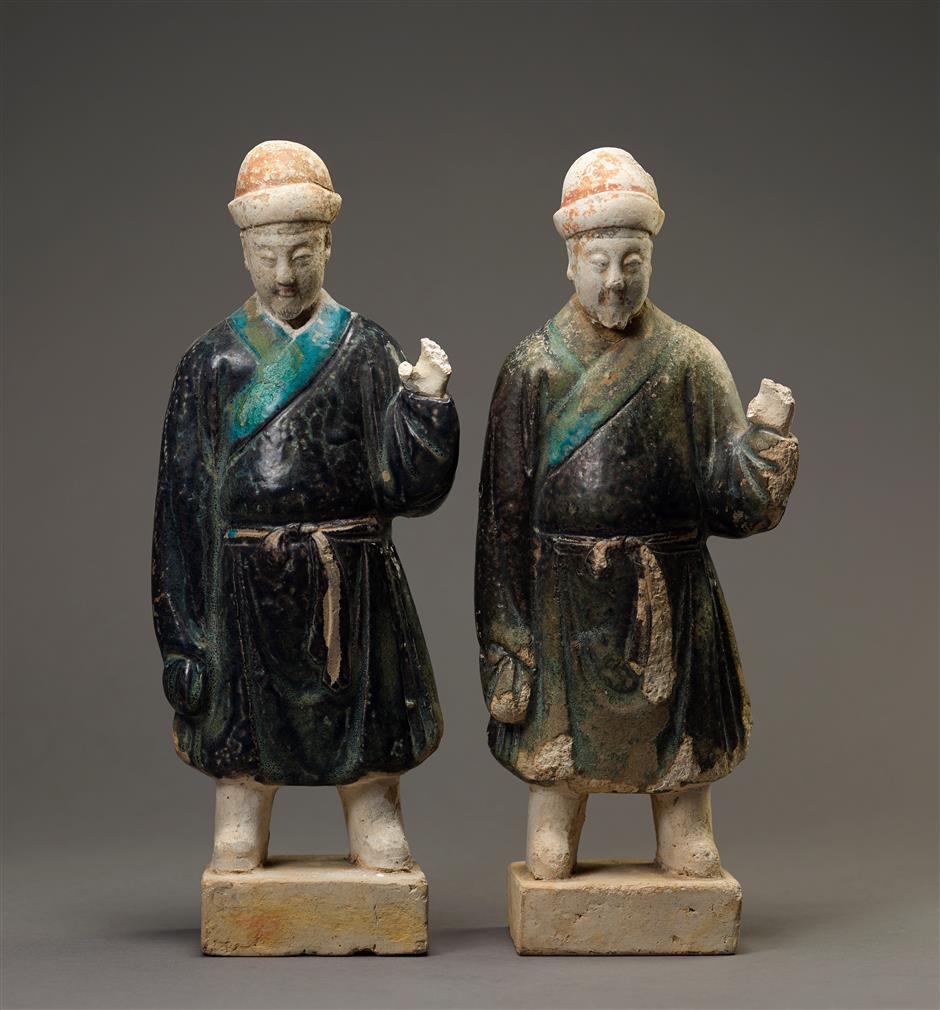Donated by Suzanne Fratus, two pottery figurines from the Ming Dynasty (1368-1644) join Shanghai Museum's collection of 66 pottery figurines in an exhibition at the museum on Monday.
Fratus, a California resident, appeared in a short video at the donation ceremony.
"It is a very important day because it marks the return of the two figurines that were lost for over 100 years. It is my honor and pleasure to return these works of art to you, the people of China," she said.
"I celebrate your beautiful culture and artistic accomplishments. In their absence from China, these two figurines have witnessed two world wars, numerous pandemics, floods and famines. It is not through money or politics that these figurines have come home to you. They were returned through the power of love and respect for you, the Chinese people."

Suzanne Fratus addresses the donation ceremony through a video.
In 1983, a special pottery funeral procession was displayed at an exhibition by the Shanghai Museum at the Asian Art Museum of San Francisco to celebrate the sister-city relationship between Shanghai and San Francisco. Fratus, at that time, was greatly impressed by the miniature figurines on display, which reminded her of relics from her childhood.
Fratus inherited these two figurines from her grandfather, John Herbert Waite, former professor of ophthalmology at the Harvard Medical School. Waite received the two pottery figurines from a recovered patient during his medical practice in the early 1900s in China.
In April, Fratus contacted the Consulate General of China in San Francisco and expressed her wish to return the two figurines to China.

The two pottery figurines returned by Suzanne Fratus to China
Pottery and wooden figurines became funeral objects during the Warring States Period (475-221 BC). Emperor Qinshihuang's terracotta warriors and the sancai (three-colored) pottery figurines of the Tang Dynasty (AD 618-907) were believed to provide the deceased with entertainment, service and guardianship.
During the Ming Dynasty, ensembles of polychrome-glazed pottery figurines as miniature funeral processions were commonly buried with the nobility and high-ranking officials to maintain their wealth and rank in the afterlife.
